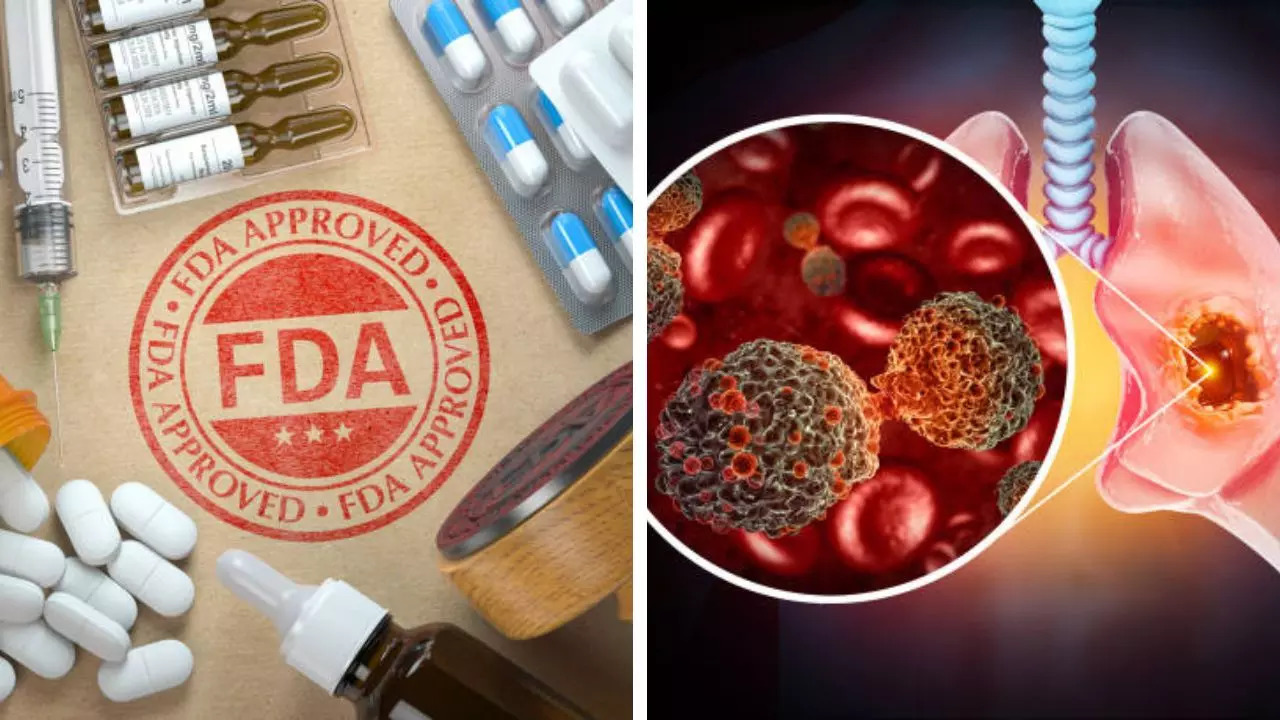Contents
US FDA approves J&J’s chemotherapy-free treatment for lung cancer
The US FDA has approved Johnson & Johnson’s chemotherapy-free combination treatment for a type of non-small cell lung cancer, giving patients access to a therapy that could replace the current standard of care. It allows the company’s cancer drug – Ribrevant – in combination with an older drug, lazertinib, as a first-line treatment for NSCL patients with a mutated form of a gene called the epidermal growth factor receptor or EGFR. Read on to know more.

NSCLC causes about 85 percent of all cases of lung cancer, which occurs when abnormal cells form and grow in your lung tissue
The United States Food and Drug Administration has approved Johnson & Johnson’s chemotherapy-free combination treatment for a type of non-small cell lung cancer (NSCL), giving patients access to a therapy that could replace the current standard of care.
The compliance now allows the New Jersey-based American multinational pharmaceutical and biotechnology company’s cancer drug, Ribrevant, to be used in combination with an older drug, lazertinib, as the first line of treatment for NSCL patients who have a mutated form of a gene called the epidermal growth factor receptor or EGFR – a protein on cells that helps them grow. However, mutations in the gene for EGFR make it grow too much, which causes cancer.
Why was the Ribrevant combination approved by the FDA?
NSCLC is a common type of lung cancer — accounting for about 85 percent of all lung cancer cases — which occurs when abnormal cells form and multiply in your lung tissue. According to the American Lung Association, 10-15 percent of cases in the U.S. have an EGFR mutation. The FDA says its decision is based on data from a late-stage study that found the Ribovent combination increased the time patients lived without their disease getting worse, compared with AstraZeneca’s blockbuster drug, Tagrisso.
TAGRISSO is used as adjuvant therapy following tumor resection in adult patients with NSCLC whose tumors have epidermal growth, followed by chemotherapy.
What is NSCL cancer?
According to experts, NSCL cancer usually grows and spreads more slowly than small-cell lung cancer. There are three common types:
- Adenocarcinomas are most often found in the outer region of the lungs.
- Squamous cell carcinomas are usually found in the center of the lung next to the windpipe or bronchus
- Large cell carcinoma can occur in any part of the lung
What causes NSCL cancer?,
Lung cancer is the deadliest type of cancer for both men and women. Each year, more people die from lung cancer than from breast, colon, and prostate cancer combined. Lung cancer is more common in older adults. It is rare in people under age 45.
Doctors say smoking causes the vast majority of cases — about 80 percent of non-small cell lung cancers — and the risk depends largely on how many cigarettes you smoke each day and how long you’ve smoked. Being around other people’s smoke, also called secondhand smoke, also raises lung cancer risk. The risk decreases over time after you quit smoking
In addition, being consistently exposed to high levels of air pollution and drinking water with high levels of arsenic may also increase the risk of lung cancer. A history of radiation therapy to the lungs may also increase the risk.
Get the latest news on Times Now as well as breaking news and top headlines from across health and the world.


